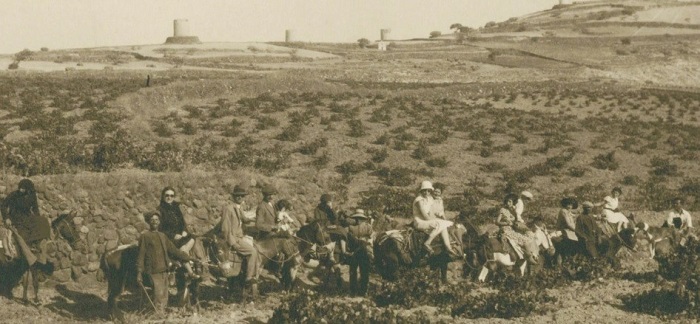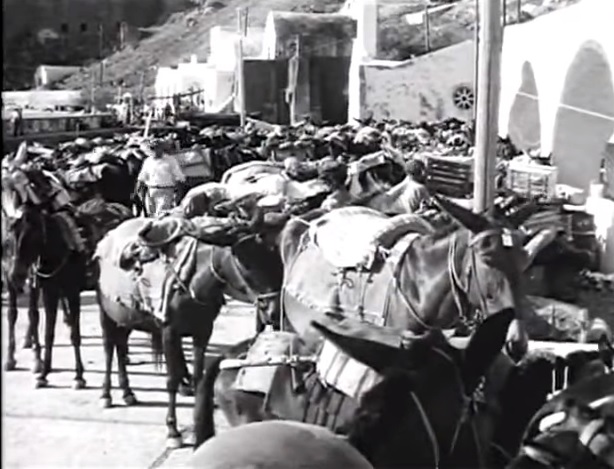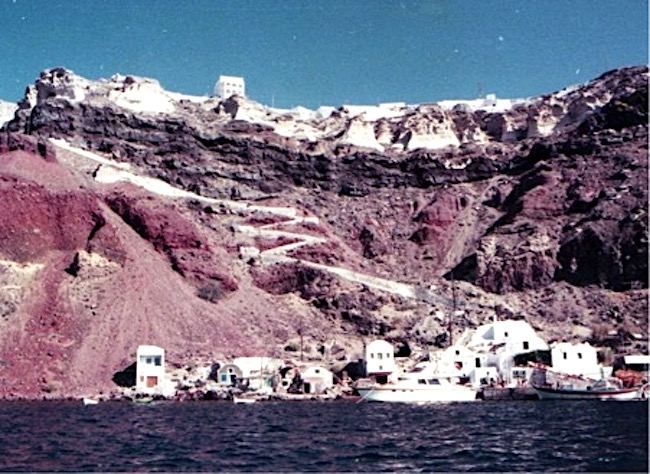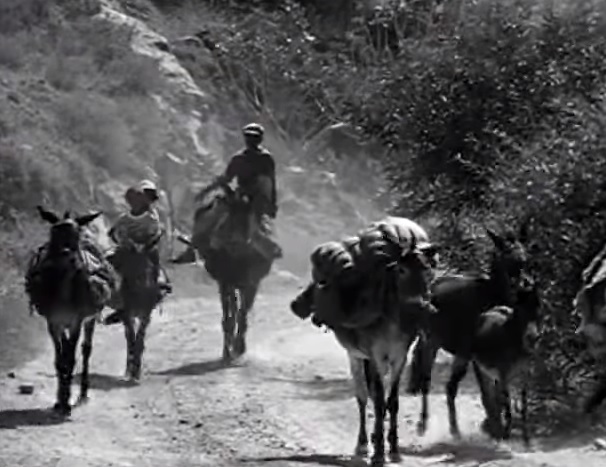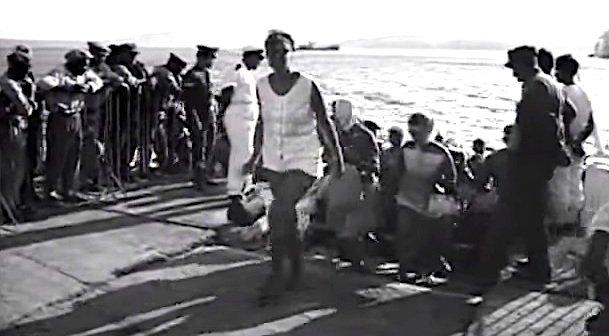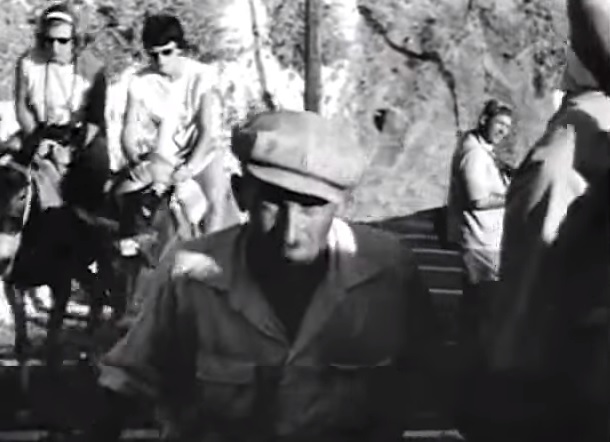By Michael Ermogenis*
There is no excuse for animal abuse, exploitation or cruelty. Let’s just state that up front, so there is no confusion about the fundamental principles of belief that we should all support in our societies worldwide.
There is, however, context and perspective, which require consideration when we pass judgement on the situations and activities of others. Assessing a situation based on our own personal beliefs, or even those of our peers and people with similar views to ours, is myopic at best and extremely dangerous at worst.
The current frenzy of articles about animal abuse, and in particular donkeys and mules on Santorini, is a classic example of a social media storm that is nearing “escape velocity” and has orbited the world virally within minutes… which is exactly what those that planned this campaign wanted to achieve.
Most such articles are ill-informed, and inaccurate at best — and are outrageously false at worst, contrived, disingenuous and written with almost zero regard to context or historical relevance.
They are mostly promotional vehicles for a number of often obscure groups whose name would never see the light of day if they didn’t attach it to a destination, an animal, an event, or a country that is of global interest, especially on social media.
They plan the taping of the so-called animal-abuse, and then feed it to various social media platforms. From there, the media hunger for populist content kicks in, and the feeding frenzy begins.
The following is not an attempt to excuse those who mistreat or abuse animals — any animals — but rather some background and context on how and why mules and donkeys have played such a pivotal role in the development of the Aegean island that the world has come to know as Santorini.
TOPOGRAPHY & ISOLATION
One could never fully claim to understand the role of the donkey and mule on an island like Santorini unless he takes the island’s topography into consideration. A small island, Santorini is not unique in its isolation, but its topography is unique, and therefore its way of life has, by necessity, had to adapt to the demands of the land.
Its three largest villages, Fira, Oia, and Imerovigli, are perched some 250+ meters (820 feet) above sea level, and cling onto the cliff face of a volcanic caldera. Seen from the water, it’s as if someone has painted the villages onto the cliffs. It is a unique sight, with its own unique architectural history.
As with all islands, Santorini’s gateways are its ports. Supplies and trade were always conducted via these means, and even inter-village trade between Fira and Oia were handled by boats of all sizes.
The ancient paths connecting all the island’s villages were nothing more than small trails suitable for animals carrying goods and people. The motorcar and road system are very recent additions in the historical timeline of an island with such ancient roots.
All goods, both domestic and traded, were imported and exported via the main ports of the island, as is the case with all islands. On Santorini, however, this means that they had to be taken down or up the steps of the port — which number between 280 and 300 for the stairways of the different ports.
The only way this could be done in ancient times, or even in recent history, was via mule and donkey. These animals were the absolute lifeline of the local people, and were their invaluable assistants in conducting business and in simply being able to live on the island.
The small port of Armeni served as a trading hub for Oia, as well as a naval shipyard for the whole of the Aegean. The port’s steps up to the village are still in use to this day.
Hundreds of mules would be used daily to transport goods and people to and from the villages. Everything from food supplies and trading goods, to furniture imported from faraway countries, would be transported by these animals up or down the steps connecting the ports to the villages above.
The roads to the ports were not designed for vehicles, as we see them today. Until recently, if there were roads at all, they were mostly narrow tracks on which animals and people could walk without having to use the steep steps.
In some cases, it wasn’t even possible to walk on the roads and paths to the various ports, so mules were the only option.
These images show how the island functioned at one time. The mules were not something for the entertainment of tourists — they were an essential element of life on this island. Just as horses were for centuries the vehicle that fueled expansion of societies and trade routes across most continents, the mule was the lifeline of the islanders of Santorini.
It is a fact that there wasn’t a family on the island that did not own at least a couple of donkeys or mules (or both). It is said that the number of mules and donkeys on the island fifty years ago outnumbered the island’s human inhabitants.
Even if we fast-forward to 2019, the mule is not just for transporting tourists up or down the steps to the ports, as many of the videos and articles contrived by clueless media opportunists suggest. That is just a side-line interest for the drivers during summer months.
The fact is that without mules, nothing could ever have been built on the caldera. Certainly nothing larger than a small bathroom or a kitchen, not to mention entire hotels in four months.
You see, the cliff face of the Santorini caldera is not like your suburban streetscape or your roadside beach resort. The cliff face is made up of lanes and paths often less than one meter wide, with steps all the way along them.
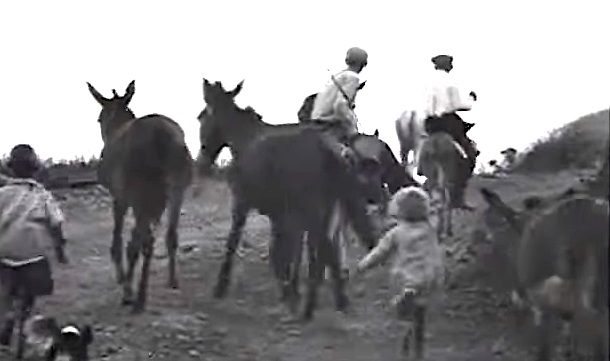
All of these materials must be brought down by mule — and ONLY by mule.
But before you can build anything, you must first excavate the space. Often, old caves used as the bases for houses were destroyed by earthquakes, or they need to be dug much deeper for the purpose of building hotels and/or villas.
But there is a catch… because the Santorini cliff face is not made of soil as we know it. It consists of “‘Aspa,” a mixture of volcanic ash, pumice, pieces of solidified lava, and sand. Aspa underground is highly compacted and behaves very differently from soil — it actually expands.
A ratio of roughly 3:1 means that one cubic meter of Aspa yields three cubic meters of dirt. That dirt cannot be simply thrown over the cliff, which is highly illegal. It needs to be shoveled into small bags, which are placed on the mules to be carried to the top of the island and disposed of properly.
Often, tons of dirt must be transported, and this can ONLY be done by mule, nothing else. There is quite simply no other practical way of accomplishing this.
In other words… if it weren’t for mules, Santorini as we know it today would simply not exist!
So to put the historical use of mules and donkeys into proper perspective, these animals are not here for the amusement of what these organizations have termed “lazy, fat tourists.” They are here because, without them, this island could simply not have developed into what it is today.
To this very day, Santorini still could not function the way it does without these animals.
DISCOVERED BY TOURISM
Sometime during the early 60s — for better or worse — Santorini was “discovered.” Following the devastation of the 1956 earthquake, many island youth had fled to make a future for themselves elsewhere in the country and the world.
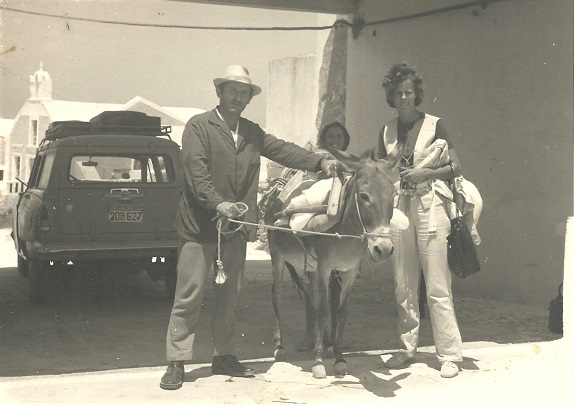
They saw and learned for themselves how the world functioned beyond their limited view as kids growing up on a small island. They saw the development of business and cultural trends, and they learned about people’s love for travel and adventure.
Some came back to their island and decided to try their hand at an early form of tourism. They renovated cave houses, they built hostels and even set up travel agencies. They made deals with the mainland travel companies, shipping companies and international airlines bringing people to Athens.
They printed the first travel brochures, and they took some of the first photos of their beautiful island for the rest of the world to see. It was a small start, but it was the spark that lit the tourism rocket ship that is Santorini today.
The first tourists began to arrive in the early ‘60s — to an island that offered virtually nothing in the way of amenities. Many of the locals had literally never left their island before, so even seeing foreigners was an entirely new experience.

Tourism did not, however, bring the mule to the island, nor did tourists stop the mule from doing its normal work on the island. Tourism simply became an additional income stream for mule drivers, especially during summer months.
Eventually, ports and roads were built, the chairlift was established, and supplies were transported by semi trailers instead of mules. But the quaint ride on a mule was still associated strongly with the “Santorini tradition.”
DREAM DESTINATION – GLOBAL RECOGNITION – AND SOCIAL MEDIA
It is said that there are “travel destinations” and “dream destinations” in global tourism. The two are not the same. A travel destination may be on someone’s wish list as a place to simply visit. But it’s the “dream destination” that motivates someone to make up a wish list in the first place.
The dream destination is the emotional driver behind the decision to travel to a certain part of the world… and while there, one decides to also visit other destinations nearby or along the way.
Santorini is one of the leading “dream destinations’” on the globe. Its mesmerising landscape leaves indelible memories in the visitor’s mind that play like a movie until the visitor returns… and most visitors do return.
It is an island that alters your perception of natural landscapes, and for many it is a spiritual experience to sit on the caldera’s edge and look at what amazing beauty the rage of nature can create. An incredibly destructive volcanic eruption has created what must surely be one of the greatest masterpieces ever created by nature.
Soon after Santorini was discovered by tourism, there was a slow but steady global word-of-mouth campaign which began spreading the news about this Aegean island of incredible, unique beauty.
Soon, there were travel brochures and magazine pictorials. Fashion shoots were planned and amateur documentaries emerged… soon to be followed by Hollywood movies.
The 1982 low-budget Hollywood film “Summer Lovers” finally exposed the beauty of Santorini on the silver screen… and the rest, as they say, is history. Santorini would never be the same again.
People all over the world saw its indescribable beauty in living color and fell madly in love. Tourism exploded, and the island started to change dramatically. But there was another revolution about to happen… one that would change everything all over again.
For decades, from the 60s to the early 90s, people traveled and took photos which they saw mostly after they got back home and developed their film. Nobody really knew the quality of the photos they took until their film was developed, something which was not exactly inexpensive.
Then along came the digital disruptors like a tsunami that sweeps away everything in its path. Kodak became irrelevant as people could now take hundreds of photographs and store them on their memory cards.
Suddenly, their travel photos were not just sitting in coffee-table albums, slowly turning yellow. They could now be shared around the world digitally, within seconds. The internet changed everything, and suddenly information about destinations was spreading like wildfire.
Then along came further discoveries which truly changed the world, as well as tourism, forever. On June 29, 2007 a little device called the iPhone was introduced by Steve Jobs, and in June, 2008 a feature called the Like button” was introduced on Facebook by Mark Zuckerberg. Smart phones and social media were born… and the genie was out of the bottle for Santorini.
I remember at the time telling people on the island that things would never be the same again. None understood what that meant, and some still don’t quite know what exactly happened. In 2008, most Greeks were far too worried about the financial collapse to pay attention to the most addictive digital creations and their future impact on tourism.
But wait… there’s more. Two years after the “Like” button started spreading like a global viral disease, there was yet another seismic shift in the way images were shared and consumed globally.
On October 6th, 2010 two Valley kids launched their secret internet project called “Burbn.” Their website exploded, attracting million users in its first two months and ten million by the end of its first year. By 2012, the site was acquired by Facebook — and image sharing would never be the same again. The site is now called Instagram.
As a result of the social media tsunami, the average person, who used to see perhaps ten photos of Santorini a year, now sees one thousand per week. Google photo upload “heat maps” show that Santorini (and Oia in particular) is the most photographed place in Greece after the Acropolis.
In fact, I think Santorini actually has a much larger digital footprint than the Acropolis on social media. This means that essentially Santorini serves as the free advertising agency for Greece worldwide.
Meantime, on Santorini, the mule still does what it has done for hundreds, if not thousands, of years. It still carries people and supplies. Except now, Santorini is a global phenomenon, and an image takes one second to travel across the entire planet.
Instant global exposure and a way to tap into the global conscience is now available to anyone who is savvy enough to take advantage of social media… for free. It’s not lost on those with a dogma, a point of view, a radical idea, or even certain governments around the world, who see fit to interfere in the affairs of other countries.
it is, after all, far cheaper and arguably more effective than traditional warfare.
So now we have the scene set for scam artists, propagandists, and foreign powers, not to mention obscure activists and radicals looking for the spotlight. What is the best way to get your 15 minutes of fame on the social media stage? Attach or associate yourself, your cause, your mission to a globally recognised person, place, product, activity or brand. You can say virtually anything and get away with it.
By the time even the most savvy targets can react effectively, the story has already reached escape velocity online — and there is nothing anyone can do to put it back in the bottle.
Suddenly Group X from somewhere on the planet posts a photo (which could be from anywhere) and claims that every tourist carried by a mule on Santorini is obese and they have photos to prove that the mules are tortured. Or they stage an argument with mule drivers, most of whom speak a language that even Greeks can’t understand, let alone an English-speaking provocateur who is harassing them about the supposed mistreatment of their animals.
It’s an instant Internet story. They have made a name for themselves, and the media frenzy for content will ensure that one hundred — or one thousand — sites will pick up the “event” and help spread it even further.
Fact-checking and context is not a skill on display here… the purpose is not accuracy or even legitimacy. The purpose is sensationalism, akin to riding shotgun on a global “name” for the purposes of publicity.
THE REALITY
Nobody would ever say that there aren’t owners who neglect their animals. I would like to think that no owner harms his animal on purpose, but there is no doubt that bad or ill-informed practices exist.
There is also the important point that a mule is not a donkey… there is a significant difference in size and strength. Most animals used on Santorini for construction work, as well as tourist transport, are mules.
However, there is a lot to be said about awareness and training provided to owners. Not all, but some, are still stuck in mindsets they inherited from generations past. The world has changed around them in ways they cannot even comprehend.
Technology today means that everything can be easily magnified, exposed, misrepresented and broadcasted globally in seconds. People’s tolerance is different, and “acceptable treatment” is not what these people took for granted or were taught as kids growing up on the island.
They need to be brought into line with globally-accepted standards — and they need to understand that the island’s reputation is at stake. The local authorities need to apply new standards and laws, as well as create new facilities for the animals and their owners (all of which is being done at this point in time).
However, following recent decisions enacted by the national Greek government, all of this may now be academic. New laws say that no animal should be made to carry anything more than one fifth of its own body weight — which effectively renders carrying humans obsolete.
Depending on how strictly these new laws are applied and/or policed, we may well see the end of a very long tradition on this island, as well as in many other locations around the world.
We must not, however, fall victim to complacency in relation to con artists and radicals who hijack the name of this island or any other location, person or brand, for the purpose of their own promotion.
Knee-jerk reactions to such matters only encourage such practices, and this applies to governments as much as it does to individuals who believe everything they read or see on social media platforms.
The moral of this story is not to be too quick to make judgement calls without being willing to ask questions, to seek context and to verify the motives of the “news” source. Social media is creating a dangerous world in which the few can control the thinking and beliefs of the many.
Everything is not always as it seems…
* Michael Ermogenis is a management consultant and strategic advisor to the Santorini Chamber of Commerce. He lived in Oia for twelve years and is the founding member of the “Save Oia” Campaign. He is also the founding member of the Mediterranean Alliance, which includes the localities of Venice, Oia, Corfu, Dubrovnik, Rhodes & Crete.
See all the latest news from Greece and the world at Greekreporter.com. Contact our newsroom to report an update or send your story, photos and videos. Follow GR on Google News and subscribe here to our daily email!



